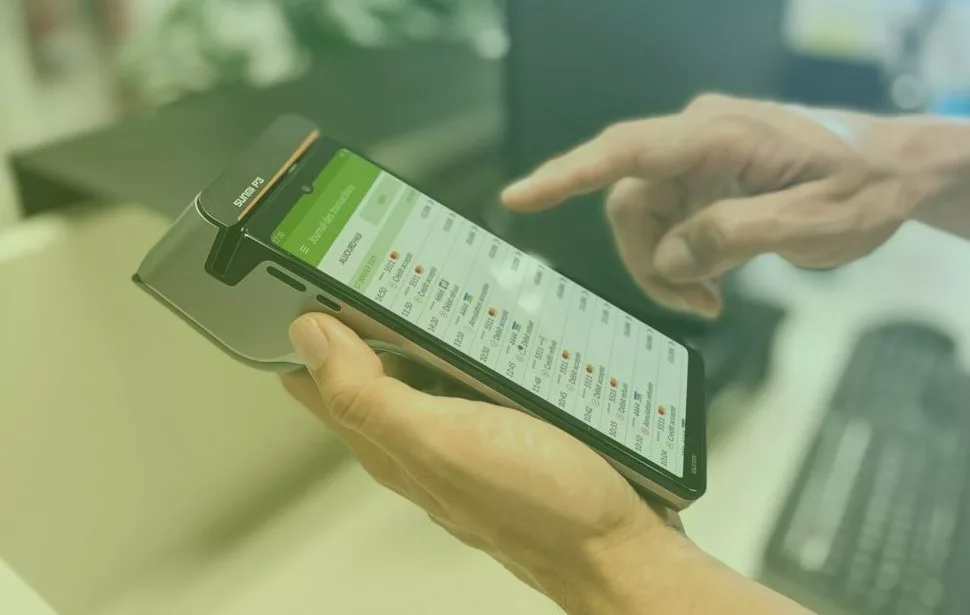We are in the middle of the 21st century. Far, far away are those times when you had no choice but to pay for your favourite goods and services in any shop with cash. We must acknowledge that coins and banknotes continue to fill our pockets, because there are still businesses anchored in the past that do not accept any other way, but it is increasingly common to resort to other methods for our payments. From the now classic credit or debit card to the most innovative alternatives, points of sale must be able to handle payments in the most varied ways.
That is why the concept of “point-of-sale terminal” has been developed. You may know it by its acronym POS and think about the little machine you are approached by to put in (or approach, if it has contactless technology) your card and then type in your PIN number. Strictly speaking, that device is called a “dataphone” and is part of the POS… but this one includes many other things.
Do you want to fully understand the concept of a point of sale terminal, the different varieties that exist and know which is the most suitable for your shop, whether it is an ecommerce or a physical shop? In the following lines we will give you recommendations so that you can choose the one that best suits your needs. Don’t miss out!
Understanding the concept of point-of-sale terminal
If you’ve been in business for a while, you’re probably familiar with the old cash registers. Those machines were like a great calculator in which you automatically wrote down the different charges received throughout the day and, in addition, there was a drawer to keep the cash. A point-of-sale terminal is the evolution of these devices.
Because its function is not only to record the monetary operations of a business, but it goes beyond that. In practice, a point-of-sale terminal is a software that manages everything related to the sales of a shop in a unified way. That is, the sales action itself (and not only in cash, but also through other means), the management of stocks and inventories, special promotions, issuance of tickets and invoices, etc.
The aim is to digitise the business as much as possible to streamline all processes and make them more efficient and cost-effective. In a physical shop, it will not only help you to accept more payment methods, but also to make it faster and, therefore, the customer will not have to go through unnecessary waiting. For ecommerce, a well-structured point of sale will result in a higher conversion rate and fewer abandoned carts in our online shop.
Of course, the point-of-sale terminal is not just a computer program. It also has a part of specialised hardware essential for everything to work properly. You at least need the dataphone, which can be of various types according to our needs: plug-in if there is only one payment point, wireless if you have WiFi connection and you need to move around the premises, mobile to connect it to your phone if unlike in a commercial shop, you are the one who is moving, etc. You’ll probably also need a ticket printer, if the dataphone doesn’t include this feature.
And for your business, you will also need a computer in order to make it work and a screen (if it is a touch screen, it can make your life much easier, because there will be very repetitive operations that you can solve with a single tap, avoiding having to use a keyboard in the process). It can be a common computer on which you install the corresponding program. But at PayXpert we recommend that, if you have a choice, you opt for a system designed specifically for this task. As it is a device specifically devoted to this function, it is likely to be cheaper; in the long run its performance will be higher, and besides, since you won’t use it for other tasks, it will avoid distractions.
Virtual point-of-sale terminal: the ideal solution for ecommerce
Of course, if your business only operates over the internet and you don’t have a physical shop, you won’t need to have all this machinery in your possession. But that doesn’t mean you don’t need a point-of-sale terminal. Quite the opposite: it’s even more important because you’ll have to manage payments through more varied means and from all kinds of sources.
To receive credit card payments for online purchases, your ecommerce will have to have a bank account in which to receive them. Most banks are aware of this reality and offer the possibility to install virtual points of sale that are compatible with Visa and Mastercard. When choosing one, carefully study the conditions they offer you, but not only the economic ones. It’s important to consider aspects such as the reliability of their software, the adaptability of the code to the specific characteristics of your business, and the ability to withstand large volumes of use at specific times. You don’t want, for example, for it to collapse in the middle of Black Friday and lose a lot of sales for this reason.
But remember that on the internet you don’t just pay by card. There are many other alternatives: applications such as WePay, AliPay, PayPal, biometric systems such as selfie pay (facial recognition), or even seamless or invisible payments, in which the customer is paying for the product or service received even without perceiving the moment of payment as a separate event from their purchase. It is important not only to choose the methods that best suit our needs, but also to make sure that our point of sale is capable of processing them.
That is why a smart solution for any business is to implement a payment gateway, i.e., an integrated system in which all possible alternatives that our business will need are enabled so that they are managed together, simply and efficiently. Do you want to know in detail what this technology is about and how it can benefit your business and help you increase sales?
Don’t forget to follow our blog, where we will give you detailed information about this and many other essential aspects for your shop to thrive.




